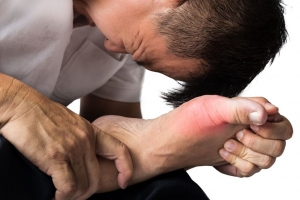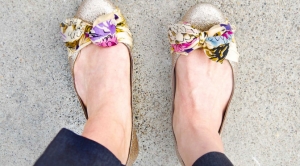Connect With Us
Blogs
Displaying items by tag: Diabetes
Does Your Foot Pain Signal a Serious Condition?
You might be surprised to learn that many diseases have foot pain as one of their symptoms. Problems with the thyroid can cause nerve sensations in the feet; or degeneration in the lower back might irritate the nerves of the spine, impeding sensation in the feet. Learning what signs to look for could improve your life or even save it.
Peripheral Arterial Disease (PAD)
PAD occurs when plaque – a fatty substance which builds up in the arteries in the legs – reduces blood flow to the lower legs and feet. Symptoms include cramping in the calves, or other parts of the leg while it is in motion. It may even cause foot pain, or prevent wounds in the foot from healing properly.
While the most obvious symptoms of PAD involve the legs, it is associated with hidden damage to the heart and brain. This means that PAD sufferers are at a higher risk of heart attack and stroke. Smoking, diabetes, high cholesterol, and high blood pressure will also increase the risk of PAD. Medications may be prescribed, but diet and lifestyle changes are also necessary.
Rheumatoid Arthritis (RA) and Gout
The Arthritis Foundation revealed that 46 million Americans have arthritis or other chronic joint problems. Of the 1.3 million Americans who suffer from rheumatoid arthritis, 90 percent of them will experience symptoms in their foot and ankle.
RA develops when the body’s immune system mistakenly attacks the joints, causing pain and swelling. If RA reaches the feet, pain will begin in the toes, and then spread to the feet and ankles later on. The joint damage caused by RA can even change the shape of the toes and feet, given enough time. RA treatment involves medication, exercise, and sometimes surgery.
Gout is another type of arthritis caused by the accumulation of uric acid in the body. The acid collects in the joints, especially the big toes, and will cause intense, episodic pain. The acid may even cause kidney stones if it builds up there.
Gout treatment involves exercise, lots of water, avoidance of certain medications, and staying at a healthy weight. Doctors may prescribe gout patients with nonsteroidal anti-inflammatory drugs (NSAIDs), steroids, or other medications.
Diabetes
Approximately 24 million Americans have diabetes, but 6 million don’t even know it. Diabetes is a condition in which glucose, or blood sugar, builds up in the blood. While glucose is necessary to fuel the body, an excess amount will damage nerves and blood vessels in the feet, causing decreased sensation and reduced blood flow.
Other symptoms of diabetes include numbness and tingling in the feet, and severe foot infections. While many people experience foot discomfort after a long day of standing, severe foot pain out of proportion with your activity level is a problem that should be reported to your doctor. Diabetes can lead to other major foot problems as well, and possibly surgical removal of the toe, foot, or lower leg.
Diabetes can be treated with medication and regular foot exams. It also requires lifestyle changes like quitting smoking, and wearing supportive shoes to mitigate foot trauma.
For more information on foot pain or to schedule an appointment, contact Superior Foot & Ankle Care Center.
How to Prevent Running Injuries
Overtraining and overusing the feet are the main causes of common running injuries. A number of these common injuries are caused by overrunning. Runner’s knee is a condition that is characterized by the back of the kneecap beginning to wear away and cause pain in the knee. This frequently occurs due to either a decrease in strength in the quadriceps muscles or ill-fitting shoes that are lacking in proper support for the inside of the forefoot. Strengthening exercises focusing on the quad muscle and sports orthotics are the usual treatments for those suffering from runner’s knee. Prevention of the condition lies in a focus on hip strengthening and quad-strengthening to keep the kneecap aligned. To help learn the best exercise to heal runner’s knee, one can also undergo physical therapy.
One common injury, called iliotibial band syndrome, is often caused by overtraining. This condition occurs when the iliotibial band gets irritated, creating pain and discomfort in the outside knee area. Plantar fasciitis, another common running injury, also occurs as a result of inflammation and irritation. Plantar fasciitis is an inflammation and irritation of the bone in the foot. A large amount of pain is often experienced due to plantar fasciitis. The condition can be caused by a high arch, improper footwear, tight muscles, or flat feet. It can best be avoided by stretching and wearing appropriate footwear that supports the foot.
Another common injury for runners is stress fractures. These injuries occur due to running style, overtraining, or a lack of calcium. Stress fractures most often occur in several locations in runners, including the inner bone of the leg, the thighbone, the bone at the base of the spine and the bones of the toes. Stress fractures are best prevented by wearing proper footwear and by running on flat and hard surfaces; this will absorb some of the shock created during running.
Aside from overtraining, other causes of common running injuries include ill-fitting footwear, a lack of flexibility and strength, and irregular biomechanics. The best way to avoid running injuries is to prevent them from even occurring. Both iliotibial band syndrome and stress fractures are preventable. The first step that should be taken to prevent running injuries is to only wear footwear that fits properly and that is appropriate for whatever activity you are doing. Running shoes are the only protective gear available to runners that can safeguard them from sustaining injuries. Choosing the right pair of shoes is therefore extremely important. While running shoes are an important factor, it is also important to consider other facets of your running routine such as training schedules, flexibility, and strengthening. These elements should be considered and altered according to your running needs to best maximize your run and minimize the possibility of injury. Careful stretching before and after a run should also be considered to help prevent running injuries. Stretching muscles enables greater flexibility and a lesser chance of sustaining injury.
Great Foot Care Tips for Diabetics
Diabetics, generally, have a lot of tasks on their daily agenda. In order to stay healthy and control their disease they go through routines that include monitoring blood sugar levels, eating a balanced diet, exercising, and sticking to a medication plan. Besides all of that, there is another critical thing they must do: pay attention to their feet.
The undeniable importance of diabetic foot care stems from the effects the disease can have on the body. Nerve damage caused by increased blood sugar levels can result in a loss of feeling in the feet. When dealing with another affect of poor circulation, a dangerous combination is formed. Cuts and blisters that would normally be noticed, can then go unfelt. If left untreated, an infection can set in due to the lack of blood flow and ability to properly heal.
Refraining taking the necessary steps to actively care for your feet, what may start as a minor issue can develop into a seriously situation, one that may lead to hospitalization and a possible an amputation.
Five Essential Foot Care Tips
Check Feet on a Daily Basis: This may seem simple, but it requires a certain level of dedication and diligence. Diabetics should inspect their feet for things like corns, infected toenails, areas of redness, and calluses. Through this self-assessment, early diagnosis is possible and further complications can be prevented.
Don’t Go Bare foot: Protect your feet from potential injuries such as cuts and burns by wearing shoes and socks. On the same note, shoes should be supportive, cushioned, and fit properly.
Encourage Blood Flow: Each day, those with diabetes should move their toes and ankles around to aid in proper circulation. They should also walk and stand whenever possible. Sitting with crossed legs should be avoided, and smoking cigarettes should be stopped, as it can diminish blood flow.
Maintain Properly Groomed Feet: To lessen the risk of infection, feet should be cleaned and dried daily. Afterwards, toenails should be trimmed and cut straight across.
Avoid Extremes: Since nerve damage can cause numbness in the feet, extreme temperatures may not be noticeable. Precaution in this area first involves checking water temperature, with the elbow, before putting feet in hot or cold water. Feet should also be kept warm with socks during the night or in cold weather.
Keeping Diabetic Feet Happy & Healthy
All of these tips work together to make sure diabetics stay on the top of their game when it comes to caring for their feet. Knowing what the positive impact proper foot care can have on health, regular checkups with a podiatrist are recommended and immediate medical attention should be sought if concerning issues like a cut occurs.
At Superior Foot & Ankle Care Center, we offer the highest level of medical knowledge and skill that diabetic patients need. From treatments and exams, to footwear selection assistance and care instruction, our goal is to help ensure feet stay happy and healthy for a lifetime. If you are diabetic and would like to remain on the right track with your foot health, contact our office in Long Beach today.


